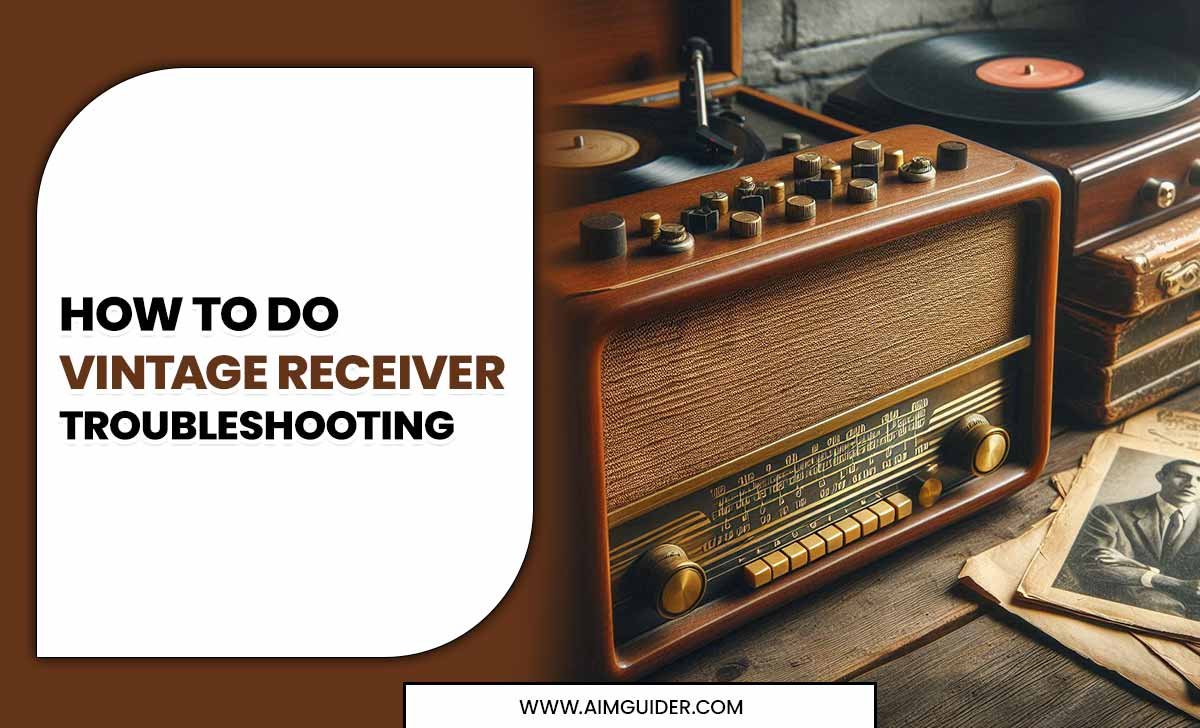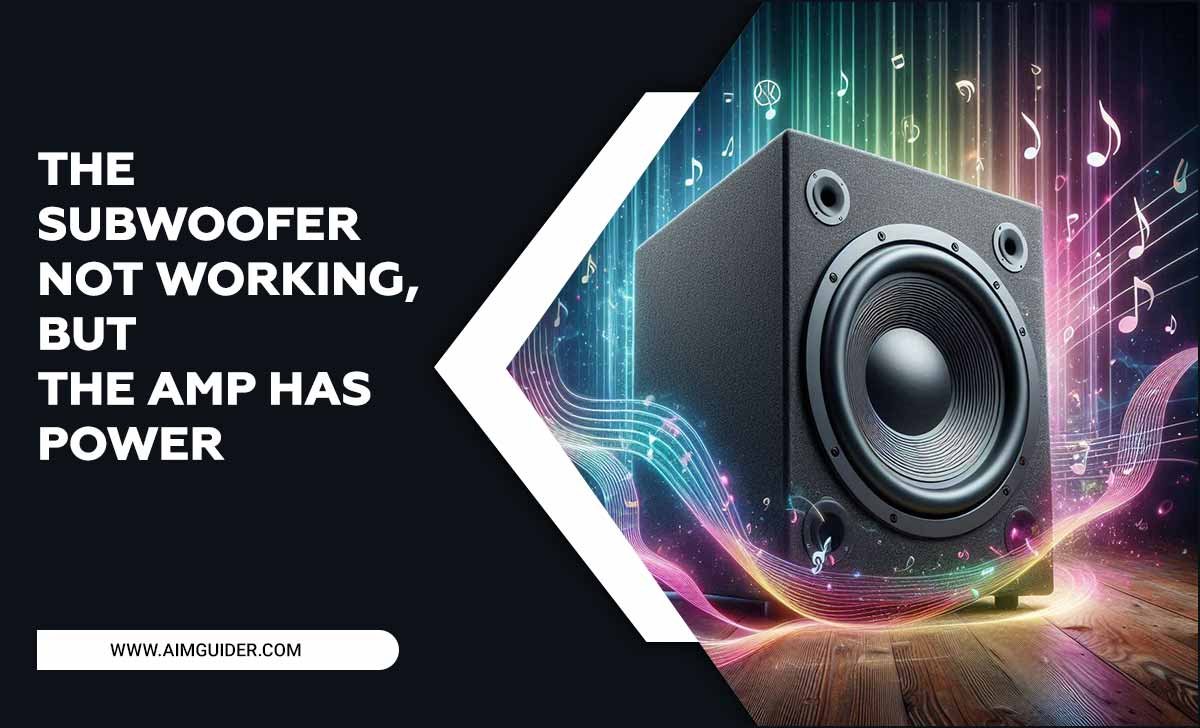Dolby Vision HDR is an advanced form of High Dynamic Range for TVs that delivers brighter, more detailed picture quality with vibrant colors and deeper contrast. It works by providing dynamic, scene-by-scene adjustments to your display, making everything you watch look stunningly realistic and lifelike.
Watching movies and shows on your TV should be an immersive experience. But sometimes, the picture just looks… flat. Colors can seem washed out, and you might lose detail in both the dark and bright parts of the scene. This is where High Dynamic Range, or HDR, comes in. It’s designed to make your picture pop! Among the various HDR technologies, Dolby Vision is often talked about as a top-tier option. If you’ve seen it mentioned on TVs or streaming services and wondered “what is Dolby Vision HDR?” and how it can make your viewing better, you’re in the right place. We’ll break down this exciting technology in a way that’s easy to understand. Get ready to see your favorite content like never before!
What is HDR? A Quick Refresher
Before diving into Dolby Vision specifically, it’s helpful to grasp the basics of High Dynamic Range (HDR). Think of your TV screen like a canvas for light and color. Standard Dynamic Range (SDR), which was the norm for a long time, has a limited ability to show the full range of brightness and color that the human eye can see.
HDR technology expands this range dramatically. It allows TVs to display:
Brighter Highlights: This means specular highlights, like the glint of sunlight on water or the sparkle in a diamond, can be much brighter and more impactful.
Deeper Blacks: Instead of shadows looking like a muddy gray, HDR can show truly deep, inky blacks, revealing detail within darker areas of the image.
Wider Color Gamut: This allows for more colors to be displayed, and those colors can be more vibrant and closer to what we see in the real world.
Improved Contrast: The difference between the darkest and brightest parts of an image is much more pronounced, leading to a more realistic and three-dimensional look.
Essentially, HDR makes the picture on your screen look more like what you’d see with your own eyes – more vibrant, more detailed, and more lifelike.
So, What is Dolby Vision HDR?
Now that we understand HDR in general, let’s focus on Dolby Vision. You can think of Dolby Vision HDR as a premium, advanced version of HDR. Developed by Dolby Laboratories, a company with a long history in audio and visual innovation, Dolby Vision isn’t just about showing a wider range of brightness and color. It’s about doing it in the smartest and most effective way possible.
The key difference lies in how Dolby Vision handles picture information. Standard HDR formats often use “static” metadata. This means they provide a single set of instructions for the entire movie or show. While this is an improvement over SDR, it’s like giving one set of lighting instructions for an entire play, regardless of whether the scene is a bright sunny day or a dark, spooky night.
Dolby Vision, on the other hand, uses “dynamic” metadata. This is a game-changer!
Dynamic Metadata: The Secret Sauce of Dolby Vision
Dynamic metadata means that Dolby Vision provides picture information that can change from scene to scene, or even frame by frame. This allows the TV to make highly specific adjustments for every moment of content.
Imagine this:
For a bright, sunny outdoor scene: Dolby Vision tells your TV to boost the brightness in highlights and make the sky a rich, detailed blue.
For a dimly lit, indoor scene: Dolby Vision instructs your TV to deepen the blacks and bring out subtle details in shadow areas without losing them entirely.
For a scene with flashing lights and vibrant colors: Dolby Vision can ensure those colors are reproduced accurately and lusciously, while also managing the bright bursts without them becoming overexposed.
This scene-by-scene (or frame-by-frame) optimization ensures that the filmmaker’s intent is preserved, delivering the most accurate and visually stunning picture possible on your specific display. This intelligent adjustment is a major reason why Dolby Vision is considered a superior HDR format by many.
How Does Dolby Vision Work? The Technical Bits Made Simple
Let’s peek a little under the hood, but don’t worry, no engineering degree is required! For Dolby Vision to work its magic, a few things need to happen:
1. Content Creation: Filmmakers and content creators use specialized equipment that can capture and process images with Dolby Vision in mind. They can define specific brightness, contrast, and color targets for each scene. This information is then embedded into the video file as dynamic metadata.
2. Content Distribution: The Dolby Vision content (a movie on Blu-ray, a stream on Netflix, etc.) is then sent to your home. The dynamic metadata travels along with the video and audio information.
3. Dolby Vision Compatible Display: You need a TV, projector, or soundbar that is explicitly Dolby Vision certified. This means the display has the necessary hardware and software to read and interpret the Dolby Vision dynamic metadata.
4. Dolby Vision Processing: When your TV receives the Dolby Vision signal, its internal processor reads the dynamic metadata. It then uses this information to fine-tune its picture settings – brightness, contrast, color, and more – in real-time, for every scene or frame. This ensures the picture displayed on your screen perfectly matches, or gets as close as possible to, what the creator intended.
Think of it like a sculptor working with clay. SDR is like having a general idea of what the statue should look like. HDR10 (another common HDR format) might provide a detailed blueprint for the whole statue. Dolby Vision, however, gives the sculptor detailed, piece-by-piece instructions for each part of the clay, ensuring every curve and texture is just right.
Dolby Vision vs. HDR10: What’s the Difference?
You’ll often see different HDR formats advertised. The two most common you’ll encounter are Dolby Vision and HDR10. Understanding their main differences can help you make informed choices when buying a TV or choosing content.
| Feature | Dolby Vision HDR | HDR10 |
|---|---|---|
| Metadata Type | Dynamic (scene-by-scene or frame-by-frame) | Static (applies to the entire content |
| Peak Brightness (Target) | Up to 10,000 nits (though current displays are lower) | 1,000 nits |
| Color Depth | Up to 12-bit | 10-bit |
| Color Gamut | Rec. 2020 | Rec. 2020 |
| Licensing Fee | Requires licensing fees for manufacturers | Open standard, no licensing fees |
| Content Availability | Growing, available on streaming services (Netflix, Disney+, etc.), 4K Blu-rays | Widely available, most HDR content supports HDR10 |
| Compatibility | Requires Dolby Vision certified display; may fall back to HDR10 if not | Widely compatible with most HDR displays |
Key Takeaways:
Dynamic vs. Static: This is the biggest differentiator. Dolby Vision’s dynamic metadata allows for more precise picture tuning.
Brightness & Color: While both offer wider colors, Dolby Vision supports higher potential brightness and deeper color bit depth, theoretically leading to a more impactful image.
Compatibility & Cost: HDR10 is an open standard, making it more universally compatible and less expensive for manufacturers to implement. Dolby Vision requires licensing, which can add to the cost of devices and content.
It’s worth noting that while Dolby Vision has theoretical advantages, the actual picture quality you experience also depends heavily on the quality and capabilities of your specific TV. A top-tier HDR10 TV might still look better than a budget Dolby Vision TV. However, when comparing similar quality TVs, Dolby Vision often provides a superior experience.
Dolby Vision vs. HDR10+
You might also encounter HDR10+. This is another dynamic HDR format, developed by Samsung and others, as a competitor to Dolby Vision. Like Dolby Vision, it uses dynamic metadata to optimize the picture scene by scene.
Here’s a quick comparison:
HDR10+ also aims to provide scene-by-scene optimization. The primary difference between Dolby Vision and HDR10+ often comes down to licensing, adoption rates by studios and streaming services, and specific technical implementations. Both are a significant step up from static metadata formats.
Where Can You Experience Dolby Vision HDR?
To enjoy Dolby Vision, you need a chain of Dolby Vision-compatible components. Think of it like needing a specific key to open a specific lock.
Here’s what you’ll need:
Dolby Vision Source: This is the content itself.
Streaming Services: Netflix, Disney+, Apple TV+, Amazon Prime Video, Vudu, and Max (formerly HBO Max) all offer a selection of movies and TV shows in Dolby Vision.
4K Ultra HD Blu-ray Discs: Many newer 4K Blu-ray releases are encoded with Dolby Vision. You’ll need to look for the Dolby Vision logo on the disc case.
Gaming Consoles: Xbox Series X and Series S support Dolby Vision for gaming and streaming.
Smartphones and Tablets: Some newer mobile devices from Apple, Samsung, and others can record and play back Dolby Vision content.
Dolby Vision Compatible Player: This is the device that plays your content.
Smart TV Apps: If your TV supports Dolby Vision, its built-in streaming apps (like Netflix) are often the source.
4K Blu-ray Players: Look for players that are certified for Dolby Vision playback.
Streaming Devices: Devices like Apple TV 4K, Chromecast with Google TV (specific models), and some Roku devices can stream Dolby Vision content.
Gaming Consoles: As mentioned, Xbox Series X/S.
Dolby Vision Compatible Display: This is your TV, projector, or soundbar.
TVs: Most major TV brands (LG, Samsung, Sony, Vizio, TCL, Hisense) offer models that support Dolby Vision. Ensure you check the specifications for direct Dolby Vision support.
Projectors: A growing number of high-end home theater projectors also support Dolby Vision.
Soundbars/AV Receivers: Some premium soundbars and AV receivers can pass through Dolby Vision signals from your source device to your TV.
Important Note on Compatibility: If you try to play Dolby Vision content on a device that isn’t Dolby Vision compatible, it will usually fall back to HDR10. This is a good thing, as it ensures you still get an enhanced HDR picture, just not the full Dolby Vision experience. For example, if you have an HDR10-only TV and play a Dolby Vision Blu-ray disc using a Dolby Vision player, the player will typically output the disc’s content in HDR10.
This is why you might see the Dolby Vision logo on a disc or streaming service, but your TV might not explicitly state Dolby Vision support. In these cases, it’s often still getting a great HDR picture via HDR10.
How to Check If Your TV Supports Dolby Vision
Checking if your TV supports Dolby Vision is straightforward:
1. Check Your TV’s Specifications: The easiest way is to look up your TV model number on the manufacturer’s website or in the user manual. Search for “Dolby Vision” in the specs.
2. Look for Logos: Your TV might have Dolby Vision logos on the bezel, on marketing materials, or in the on-screen settings menu.
3. Check the On-Screen Display: When playing Dolby Vision content with a compatible source and player, some TVs will briefly display a “Dolby Vision” or “DV” logo in a corner of the screen.
4. Consult Reviews: Reputable tech review sites often list HDR format support in their detailed TV reviews.
You can find more information on Dolby’s official website regarding Dolby Vision certified devices. For example, the Dolby Vision technology page is a great resource.
Setting Up Dolby Vision HDR
In most cases, setting up Dolby Vision is incredibly simple because modern devices handle it automatically.
For Streaming Services:
- Ensure your TV, streaming device (e.g., Apple TV 4K, Xbox), and streaming app (e.g., Netflix) all support Dolby Vision.
- Make sure you have a fast and stable internet connection (at least 25 Mbps recommended for 4K Dolby Vision streaming).
- In your TV’s picture settings, ensure HDR or Dolby Vision is enabled (it’s usually on by default).
- In your streaming device’s settings, ensure HDR or Dolby Vision output is enabled.
- Select a Dolby Vision title within your streaming app. The system should automatically switch to Dolby Vision playback.
For 4K Ultra HD Blu-ray:
- You need a Dolby Vision-enabled 4K Blu-ray player and a Dolby Vision-enabled TV.
- Connect your Blu-ray player to your TV using a high-speed HDMI cable (HDMI 2.0 or higher is recommended, and for full Dolby Vision, HDMI 2.1 is best for future-proofing).
- Turn on your TV and Blu-ray player.
- Insert a Dolby Vision 4K disc.
- The player and TV should automatically detect the Dolby Vision signal and display the movie in Dolby Vision. You may need to ensure Dolby Vision output is enabled in the Blu-ray player’s settings.
Basic Picture Settings for Dolby Vision
While Dolby Vision does a lot of the heavy lifting, you can still fine-tune your experience.
Picture Mode: Many TVs offer specific “Dolby Vision” picture modes (e.g., “Dolby Vision Bright,” “Dolby Vision Dark”). These are excellent starting points.
“Dolby Vision Bright” is usually best for well-lit rooms.
“Dolby Vision Dark” is ideal for darker, home-theater-like environments.
Avoid Over-Processing: Be cautious with aggressive picture enhancements like motion smoothing (“soap opera effect”), sharpness boosts, or excessive noise reduction. These can sometimes detract from the intended HDR look. Often, the “Filmmaker Mode,” “Cinema Mode,” or default “Dolby Vision” modes offer the most accurate picture with these turned down or off.
Room Lighting: Like any picture quality setting, ambient room light affects how you perceive the image. Adjust your settings accordingly. For example, you might want slightly higher brightness for a daytime viewing in a bright room.
Benefits of Experiencing Dolby Vision HDR
Why go through the trouble of ensuring you have Dolby Vision? The benefits are noticeable and can significantly enhance your home entertainment.
Unparalleled Visual Realism: The core benefit is a picture that looks more natural and lifelike. Colors are richer, blacks are deeper, and bright details truly shine.
Preservation of Artistic Intent: Filmmakers and cinematographers work hard to create a specific look for their content. Dolby Vision’s dynamic metadata helps ensure that their vision reaches your screen with incredible accuracy.
Enhanced Detail in All Lighting Conditions: From the darkest corners of a dark room to the brightest explosions, Dolby Vision helps reveal details that would be lost in standard formats. This makes for a more engaging and immersive viewing experience.
Brighter, More Impactful Highlights: Subtle details like reflections, specular highlights, and distant light sources become more noticeable and add a greater sense of depth and realism.
Superior Color Reproduction: Colors are more vibrant, nuanced, and true-to-life, making everything from nature documentaries to animated films look stunning.
Future-Proofing: As more content is produced in Dolby Vision, having a compatible display ensures you can enjoy the best possible picture quality from current and future releases.
Potential Downsides or Considerations
While Dolby Vision is fantastic, it’s fair to mention a couple of points to consider for the everyday consumer:
Cost: Devices supporting Dolby Vision can sometimes be more expensive due to licensing fees. However, the gap is narrowing significantly, and many mid-range TVs now include Dolby Vision.
Content Availability: While growing rapidly, not all streaming content or physical media is available in Dolby Vision. However, if your device also supports HDR10, you’ll still get an excellent HDR experience for content not encoded in Dolby Vision.
Device Compatibility Chain: As we’ve discussed, every component in the chain (source, player, display) needs to be Dolby Vision compatible for the full effect.
For most users, though, the benefits far outweigh these considerations, especially as Dolby Vision becomes more widespread.
Dolby Vision for Gaming
Gaming is another area where Dolby Vision is making a splash. Xbox Series X and S consoles support Dolby Vision for gaming, offering a more vibrant and dynamic visual experience.
When enabled, Dolby Vision for gaming allows your console to send dynamic HDR data to your compatible TV for each frame of your game. This can lead to:
- More lifelike colors: Explosions are brighter, foliage is richer, and character skin tones look more natural.






